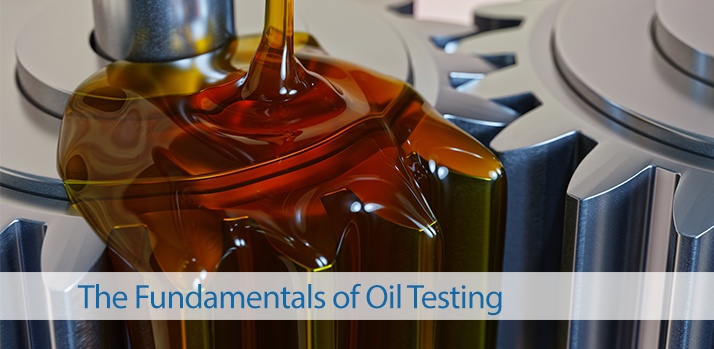
Regular analysis of the oil in your plant’s lubrication system provides key insights and reveals potential maintenance issues to remedy before they grow into catastrophes. In this blog post, we'll take a plain-language look into what exactly is tested during a basic oil analysis and what tests can tell you about the health of your machinery.
FTIR Spectroscopy
Fourier transform infrared (FTIR) spectroscopy is a powerful tool in oil analysis. Every molecule absorbs infrared radiation at a different wavelength. By passing infrared radiation through your oil sample and examining the output, a surprisingly thorough analysis can be made of the oil’s chemical makeup. This allows us to determine how much water, soot, fuel, or other contaminants are in your system.
We can use this data to develop a course of action to minimize any increase of those contaminants in your lubrication system. Along with the acid number test below, an FTIR spectroscopy also allows us to evaluate the amount of helpful antioxidants in your lubrication system and ensure that your oil doesn't become oxidized to a harmful level.
Spectrochemical Analysis
Spectrochemical analysis is another method of determining the makeup of chemicals in your system’s oil. The focus with this test is on metals. The oil is excited into vapor form. Since each metal tested creates a different wavelength of light when excited, we can get an accurate picture of the amount of each in your oil.
There are two main types of metals we are concerned with. First are the wear metals that come from your machinery itself as it degrades. By understanding the metallurgy of your machinery and tracking these values over time, we can give you clues about the rate at which the various parts of your machines are wearing out.
The second type of metal that interests us is contaminant metals. Tracking these allows us to tell if dirt, coolant, or other contaminants are entering your system at alarming levels. If your machinery processes materials that contain metal, we will also be able to tell you how much of those are making their way into the system.
Ferrous Wear Concentration
Spectrochemical analysis comes with the limitation that it cannot detect larger particle sizes. The ferrous wear concentration test is not subject to such limitations and gives us an accurate measure of the ferrous metals in your oil.
This is another useful tool in determining the health of your oil at a given point in time, as well as the wear rate of your machinery over time. Increasing trends in wear metal concentration can point to impending component failure.
Acid Number
Healthy oil contains antioxidants that help protect your equipment and components from the effects of oxidation. As oil oxidizes, acids are formed. By measuring the level of these acids, the acid number test gives us an indication of how much oxidation is in your system. The obvious benefit of this test is that it lets you know if your oil is oxidized enough to begin damaging your machines. As part of a regular testing routine, however, we can use the acid number test to track the rate of depletion of antioxidants in your system. This gives us an accurate projection about when you’ll need to take action before oxidation ever gets to the point of damaging your system.
Viscosity
Manufacturers of machines design them to operate with a specific oil viscosity. This is because viscosity is the single most important factor in ensuring that your lubrication system is performing the way engineers designed it.
Done by simply measuring the rate at which your oil sample flows through a specially calibrated tube, the viscosity test may be the easiest to perform. It is also one of the most important in determining how well your oil is doing the job it is supposed to do. Variations in viscosity test results over time can indicate oxidation or oil breakdown. In connected systems, variations could be indicative of cross-contamination issues.
Proper analysis of oil testing data by qualified experts can give you critical information regarding steps you can take to minimize wear and damage to your machines and components. Regular testing allows experts to evaluate trends and make recommendations to extend the life of your expensive machinery. To find out more about how oil analysis can, and should, become a part of your regular maintenance routine, contact us today.








